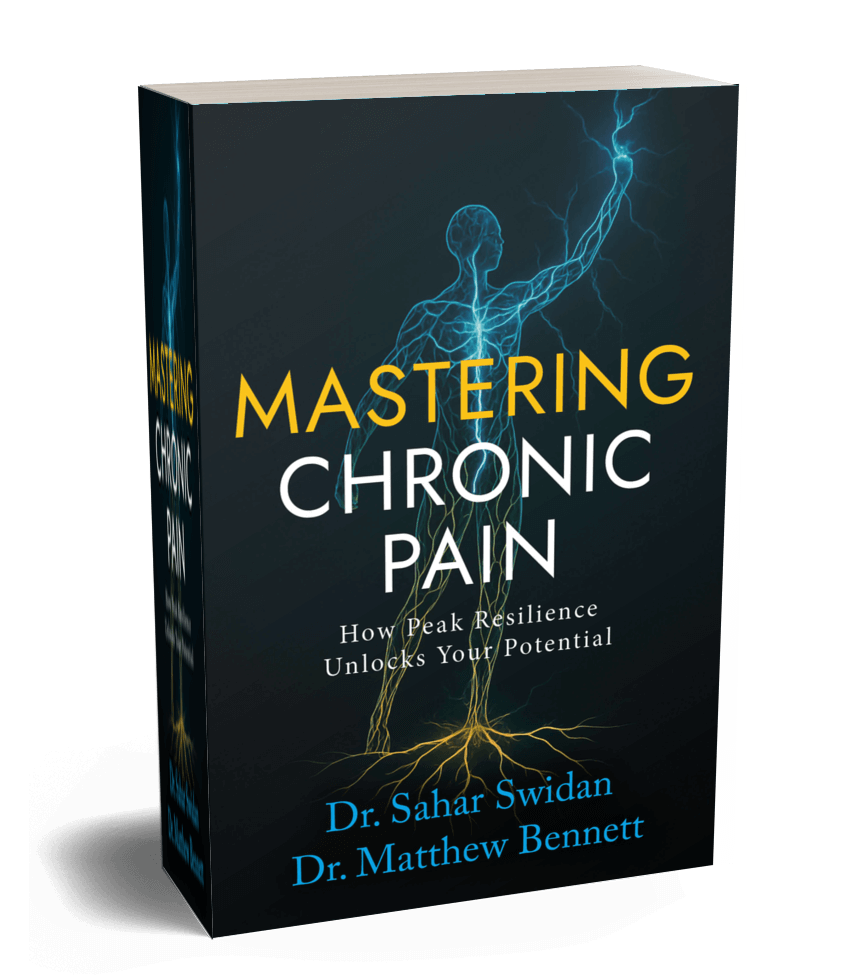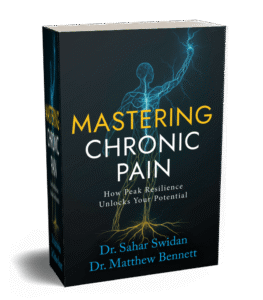Understanding and expressing emotions in healthy ways is essential for maintaining strong mental health, yet many people struggle to put their feelings into words or process them effectively. This article brings together practical strategies backed by insights from mental health experts who specialize in emotional regulation and well-being. Readers will learn actionable techniques for recognizing, naming, and releasing emotions through methods ranging from journaling and physical movement to mindful check-ins and somatic practices.
- Label Emotions to Calm Your Brain
- Use Somatic Mapping After Challenging Sessions
- Map Emotions to Release Unspoken Pain
- Let Creative Movement Match Your Mood
- Check in With Yourself for Ten Minutes
- Name Frame and Claim Your Emotions
- Write Ten Lines That Start With Feel
- Combine Mindful Movement With Conscious Naming
- Slow Down and Name What Triggered You
- Practice Emotional Awareness With Trusted People
- Integrate Physical Movement Into Emotional Expression
- Journal Every Morning to Clear Your Mind
- Guide Your Labeling to Create Space
- Journal With Intention Each Day
- Stop and Place Your Emotion Physically
- Dump Your Brain Before You Speak Aloud
- Set a Timer for Timed Check-Ins
Label Emotions to Calm Your Brain
Expressing emotions in a healthy way has been one of the most transformative factors in maintaining my mental health, both personally and professionally. For years, especially working in a healthcare setting, I believed emotional composure meant strength—that staying calm and neutral was the best way to cope with the distress I witnessed. But over time, I realized that suppressing emotions didn’t make them disappear—it made them surface later as fatigue, irritability, or emotional numbness. Learning to express emotions intentionally and safely has allowed me to process experiences instead of carrying them.
One technique I’ve found particularly effective—and often recommend to others—is “affect labeling,” which simply means putting your emotions into words in real time. When we name what we’re feeling (“I’m anxious about this deadline” or “I feel sad and drained after that interaction”), it activates regions in the prefrontal cortex that regulate emotional intensity. In other words, labeling emotions helps calm the amygdala—the part of the brain that triggers strong emotional reactions. This technique doesn’t suppress the feeling; it acknowledges and organizes it, giving the brain a sense of clarity and control.
I use this practice throughout the day, especially during stressful moments. Sometimes I’ll pause and silently identify my emotions before responding to an email or entering a difficult conversation. Other times, I’ll journal briefly in the evening, using prompts like “What did I feel most strongly today?” or “What did I need but didn’t express?” This small act of naming feelings helps me reflect without judgment and prevents emotional build-up.
Over time, this practice has improved my emotional intelligence and resilience. I’ve become more aware of my triggers, more compassionate toward myself, and more authentic in relationships. It’s easier to communicate needs calmly and prevent misunderstandings because I understand what’s happening internally before projecting it outward.
In essence, healthy emotional expression isn’t about venting everything—it’s about translating feelings into understanding. Affect labeling has given me a language for my inner world, turning emotional waves into information rather than overwhelm. It’s a simple but powerful reminder that naming our emotions is often the first step to taming them.

Use Somatic Mapping After Challenging Sessions
As a trauma-focused therapist who regularly processes secondary trauma from working with clients experiencing severe mental health crises, I’ve learned that healthy emotional expression serves as a critical protective factor against burnout and compassion fatigue that affects many mental health professionals.
The most transformative realization involved recognizing that emotional suppression – a common coping mechanism in helping professions – actually amplifies stress rather than managing it effectively. When I began implementing deliberate emotional processing practices, my capacity to remain present with client suffering increased significantly while my own anxiety and emotional exhaustion decreased. This shift enhanced both my clinical effectiveness and personal life satisfaction.
The technique that has proven most valuable involves what I call “SOMATIC EMOTIONAL MAPPING” – a practice where I spend five minutes after challenging sessions identifying where emotions manifest physically in my body. I notice tension patterns, breathing changes, or energy shifts, then use gentle movement or breathing exercises to process these sensations rather than carrying them into subsequent interactions.
This approach differs from traditional talk therapy because it addresses the neurobiological reality that emotions register in the body before becoming conscious thoughts. By attending to physical sensations associated with emotional experiences, I can process stress responses more completely and prevent the accumulation of unresolved emotional residue that leads to chronic activation.
The broader principle applies beyond mental health professionals – emotional expression through body awareness, creative outlets, or structured reflection prevents the psychological buildup that manifests as anxiety, depression, or interpersonal difficulties when emotions remain unexpressed or inadequately processed.

Map Emotions to Release Unspoken Pain
Expressing emotions in a healthy way has made a profound difference in my own mental health. In my experience, when I allowed grief, anger, or fear to remain unattended, it seeped into my body as tension and kept me in a state of emotional limbo. Learning to name what was happening—”I feel exhausted,” “I feel resentful,” “I feel hopeful”—opened the door to freedom instead of holding me hostage to unspoken pain.
One technique I often use in my work with families dealing with addiction is what I call the “Emotion Map.” I invite each person to identify a specific emotion they’ve been avoiding or unaware of—perhaps shame around substance use in the household, anxiety about relapse, or sadness for what’s been lost. Then together we map where they feel that emotion physically—like tight shoulders, hollow stomach, and a racing heart—and assign a word or image to it that they can hold in mind. The next step is a simple ritual: for five minutes, the person either writes about the emotion, draws it, or breathes into the physical sensation while stating their experience out loud. I find that this shift helps them move from carrying the emotion unconsciously to owning it consciously.
In my opinion, this kind of structured emotional expression opens the path to real healing because it honors the emotional reality of addiction’s impact on the family system. Families who engage in this process start to notice fewer explosive outbursts, fewer shutdowns, and more honest conversations. The real power comes when those subtle changes add up to a new rhythm of connection and relief rather than a constant fight for survival.

Let Creative Movement Match Your Mood
Expressing emotions in a healthy way has been fundamental not only to my professional success as a public health specialist and coach, but also to my personal well-being. I often think of emotions as a river, sometimes calm and gently flowing, other times rushing and turbulent. If we try to block the flow, pressure builds and eventually forces its way out, often in disruptive or unexpected ways. However, when we allow the river to flow freely, it nourishes the surrounding land and brings a sense of balance.
There’s strong scientific support for this approach. Expressing emotions constructively can lower stress, support immune health, and boost mood. Suppressing feelings, on the other hand, is linked to anxiety, burnout, and even physical symptoms (Gross, 2015).
One of my favourite outlets is creative movement. I’ll put on music that matches my mood and let my body move however it wants—no choreography, just release. What makes this technique especially powerful is the sense of play and personal connection it invites. Sometimes I’ll put on Oasis to find my inner voice and gain assertiveness, Bon Jovi to let off steam, or Britney Spears if I want to feel free and energised. “Stronger” is a personal favourite for boosting confidence! Each choice helps me process my emotions in a way that feels right for the moment.
You don’t need special skills; just find what works for you—movement, art, writing, or gardening—and approach it with curiosity and play. Letting your emotions flow can bring surprising freedom, clarity, and ease. Your river of emotion isn’t something to fear; it’s a powerful force for growth and well-being, especially when you let it flow playfully.
Reference:
Gross, J.J. (2015). Emotion regulation: Current status and future prospects. Psychological Inquiry, 26(1), 1-26.

Check in With Yourself for Ten Minutes
For me, learning to express my emotions in a healthy way meant moving beyond bottling things up or turning to food to cope–a pattern I fell into as a teen. One technique I rely on is simply taking ten mindful minutes each day to check in with myself, often while chopping vegetables or walking outside. I ask myself, “What am I feeling right now?” and allow the answer to surface without judgment. This small habit helps me process emotions before they become overwhelming, and it’s been a cornerstone not just to surviving, but to truly thriving.

Name Frame and Claim Your Emotions
As an adult and as a mental health professional, learning to express emotions in grounded, structured ways has strengthened every part of my life—my marriage, my parenting, and my clinical work.
Healthy expression didn’t make me “less emotional.” It made me more intentional about what those emotions were trying to tell me.
How healthy emotional expression improved my mental health
I experienced less internal tension because emotions were no longer being stored in my body.
My anger became easier to regulate since I wasn’t suppressing it until it boiled over.
I noticed more clarity during conflict, especially in high-stakes conversations with couples or teams.
There was a significant shift in self-compassion because giving emotions a voice reduced shame and self-criticism.
My relationships felt safer and more connected because people could understand what I felt rather than guess.
The one technique I rely on and teach often: “Name, Frame, and Claim”
This is a simple but powerful method I use personally and with clients who struggle with emotional overload.
1. Name the emotion
Put accurate language to what you’re feeling.
* “I’m not just irritated. I’m overwhelmed.”
* “This isn’t anger—it’s hurt.”
Naming reduces emotional confusion and lowers the intensity almost immediately.
2. Frame the emotion
Identify where it’s coming from.
* “This frustration is tied to feeling unheard.”
* “This anxiety is coming from past experiences, not the present moment.”
This helps you separate the emotion from the story you’re telling yourself.
3. Claim the next step
Choose how you want to respond rather than react.
* “I’m going to take a pause before continuing this conversation.”
* “I need to express this calmly instead of shutting down.”
Claiming the next step gives you control without suppressing the feeling.
Why this technique works
It mirrors what helped me heal from childhood instability:
Structure + honesty + emotional safety.
When your emotions have structure, they don’t have to explode. When they have honesty, they don’t need to hide. And when they have safety, they become tools, not threats.
Final insight
Healthy emotional expression isn’t about being more emotional. It’s about being more aligned with yourself.
When you can name what you feel and express it clearly, you show up in your life with more strength, more calm, and more connection—both internally and with the people you care about.

Write Ten Lines That Start With Feel
For years I was good at performing calm while carrying a storm. After a painful breakup and a rough stretch at work, I noticed I could hold it together in public and then feel strangely numb at night. Expressing emotion in a healthy way didn’t make me “softer.” It made me honest, which was the only way my sleep and relationships started to heal.
The technique I still use and teach is my ten-line “I feel” page. It takes five minutes. I sit down, put one hand on my chest, breathe in for four and out for six a couple of times, then fill 10 lines that all start with “I feel…”. No fixing, no poetry, no story about who is right or wrong.
When I finish, I circle the one feeling that shows up the most and write one small need that matches it, like “I need a quiet hour tonight” or “I need to tell Anna I’m still hurt about Saturday.” If it belongs only to me, I act on it. If it belongs with someone else, I share one clear sentence.
The main reason why it helps so much is that the body settles first, the brain names what is real next, and only then do I choose a step. Labeling a feeling lowers its intensity and turns it into information. Doing it on paper makes it harder to gaslight myself.
This practice has made me more present with friends, less reactive at work, and kinder to myself when big waves arrive.

Combine Mindful Movement With Conscious Naming
Healthily expressing emotions has greatly improved my mental health by helping me release tension instead of carrying it. When I allow myself to feel my feelings and communicate emotions honestly, I gain perspective rather than being controlled by them. It’s made my relationships more authentic and reduced the emotional exhaustion that comes from suppressing feelings. One technique I recommend to express your emotions in a healthy way is to practice mindful reflection through movement like walking, stretching, or gentle exercise while consciously naming what you’re feeling. For example, during a walk, you might think that you feel disappointed and you can let your body walk through that emotion. Physical movement helps process feelings that words alone can’t release, and mindfulness keeps the focus on acknowledgment rather than rumination. This simple practice combines awareness and release to leave you feeling more calm, clear, and grounded. Many people find this restorative when emotions start to feel overwhelming.

Slow Down and Name What Triggered You
Learning to express emotions in a healthier way honestly changed my mental health more than anything else. For a long time, I treated every feeling like something to push through or ignore, and that just built pressure. When I finally learned to slow down and name what I was feeling, things got lighter. It didn’t fix everything, but it stopped the emotions from controlling me in the background.
One technique I use a lot is a simple check-in: “What emotion am I feeling right now, and what triggered it?” It takes 10 seconds, but it helps me respond instead of react. Anyone can do it, and it makes you feel more grounded and in control of your day.

Practice Emotional Awareness With Trusted People
It can be common to push emotions aside, suppress them, or simply devalue them; believing it may be easier to stay quiet or “hold it together.” Although this may feel like the “logical” choice in the moment, suppressing emotions can take a significant toll on your mental health over time.
Simply stated, emotional suppression happens when one intentionally avoids or denies their feelings, instead of acknowledging or expressing them. This emotional “habit” can readily lead to bottling up feelings, addictions, poor self-care, or distractions.
Although this may provide short-term relief, it does not necessarily address the underlying issue, fueling further repetition of confusion, outbursts, or suffering.
Alternatives to Emotional Suppression:
Practice Emotional Awareness
Start by noticing and naming your emotions without judgment. Ask yourself simple questions like “What am I feeling right now?” or “Where do I feel this in my body?” Acknowledgment is the first step toward a healthier expression of emotion. Over time, this practice builds greater self-awareness, helping you respond to challenges more impactfully and gain invaluable emotional information.
Share with Trusted People
Talking with a friend, partner, or therapist can help you process feelings in a contained and emotionally safer way. When you share your emotions openly, you allow others the opportunity to understand and support you more deeply. These conversations can also shift your perspective, making problems feel more manageable. Over time, these types of emotionally honest dialogues can strengthen trust and deepen your relationships.
Use Creative Outlets
Writing, art, or physical activity can provide healthy ways to release emotions and reduce stress. Journaling can help organize thoughts, while painting or music can also assist in expressing feelings. Physical outlets, such as running, yoga, or dancing, can help release built-up tension in the body.
Seek Professional Support
Therapy can also help uncover your emotional blind spots, address barriers to feeling, and deepen your own emotional intelligence. Professional support can also offer an emotional container, making it easier to break the cycle of suppression, better meet your emotional needs, and build greater emotional resilience.

Integrate Physical Movement Into Emotional Expression
My mental health improved when I began integrating physical movement into emotional expression. I started walking and talking instead of sitting and reporting during difficult discussions. Movement broke the inertia of charged emotions and opened perspective through shifting environments. Many breakthroughs happened during these walk-and-talk sessions outside the office or conference room. I found that pacing while processing concerns gave my mind and body time to align.
One personal practice that helps me involves changing location when I feel stuck emotionally. I might walk to a window, a rooftop, or even a corridor to talk aloud. The change in space shifts my internal narrative and helps me see triggers more clearly. I encourage others to add movement to emotional check-ins rather than staying anchored to a desk. I’ve learned that emotional expression feels most authentic when body and mind move together in rhythm.

Journal Every Morning to Clear Your Mind
About five years ago, I started journaling every morning. The rule was simple: sit down and write without thinking. I could complain about whatever I wanted, brainstorm new ideas, make lists of my likes and dislikes—it didn’t matter. The goal was just to get everything out of my head and onto the page.
Since then, I’ve journaled almost every day, and it’s become one of the healthiest ways for me to release emotions and process what’s going on in my life. Before I started, I didn’t really have an outlet for how I felt. Journaling changed that. If you’re struggling to express your emotions, I highly recommend starting a morning journaling habit—it’s a simple but powerful way to clear your mind and feel more grounded.

Guide Your Labeling to Create Space
I realized that when I allow myself to name what I’m feeling, I am more in response and less in reaction. It also allows me to better listen and support my team, without bringing an unspoken energy of tension into discussions or creative reviews. This change has boosted my emotional resilience, particularly during weeks where the stories behind our products remind me how fragile people’s circumstances can be.
One trick that’s worked for me time and again is a technique I call “guided labeling.” After an episode that provokes a particularly intense reaction, I make sure to express aloud — quietly and privately — what exactly I’m feeling and what might have provoked it. I used this one recently after spending time on a memorial project: “I’m feeling heavy today about their experience because it reminds me of someone that I care about.” It’s minor, but it creates a little space to enable me to respond calmly and return to my work with kindness and focus.

Journal With Intention Each Day
I believe that expressing emotions in a healthy way is one of the most important steps toward improving mental health and building meaningful relationships.
Personally and professionally, I’ve seen how acknowledging emotions—rather than suppressing them—can lead to greater self-awareness, reduced stress, and more fulfilling interactions. When we allow ourselves to feel and express what’s truly going on inside, it opens the door for healing and growth. It’s a process that nurtures both mental clarity and emotional resilience.
One technique I often use and recommend is journaling with intention. This involves setting aside a few quiet moments each day to write freely about your thoughts and feelings, without judgment or the need to be “right.” It helps you process complex emotions, recognize patterns, and gain perspective. Over time, journaling becomes a safe emotional outlet that promotes mindfulness and inner calm.

Stop and Place Your Emotion Physically
The release of feelings instead of holding back everything is a different experience when you realize the amount of strain the body experiences when you are determined to remain calm at all times. This is what we observe in our patients at RGV Direct Care who report physical symptoms that are actually signs of emotional overload: nighttime headaches, chest tightness that is not cardiac, stomach problems that only get worse when the patient continues to swallow their anger. Once individuals begin to show their emotions in a more healthy manner, their body eventually has a chance to take a break. The sleep becomes more regular, irritability decreases, and they no longer feel that they are holding themselves together during the day. Such change in itself can alter the whole basis of a person.
A name and place moment is one of the methods which I can use and most of our patients can use. It requires less than thirty seconds. You stop and identify the emotion whether verbally or silently—fear, sadness, disappointment, strain—and locate it at a given location in your body: probably your jaw, probably your shoulders, probably your stomach. The second time you do it, the reaction is weakened in some way since you are not struggling with it, and you are not pretending it to be what it is not. It also provides you with some space and allows you to react in a calm manner and not in a rush. Patients of RGV Direct Care employ it during hard conversations, appointments, and even prior to going to work. It is easy, it is personal, and it does not suppress emotions; on the contrary, it releases them, and that difference will be observed in mental health in the long run.

Dump Your Brain Before You Speak Aloud
Putting my emotions out in a healthy way has removed an absurd level of stress from my mental well-being. The idea of “being strong” meant other people-centered emotions needed to be shoved inside, where they would build upon themselves like a pressure cooker in my head. Expressing whatever I was taking in rather than letting it all explode in a shutdown could easily make me feel less tense, even less anxious. Writing out my emotions before I spoke to someone was also helpful. Not a fully written entry, but just dumping whatever was in my brain so I could realize what was happening.
Emotions always seem bigger when they’re bouncing around inside my brain. Getting them down in plain text helps me make sense of them, puts them into proper perspective, and helps me say what I mean without losing my cool in the process. The small delay it takes to put my thoughts into text has prevented me from having a lot of conversations that would’ve gone badly, anyway.

Set a Timer for Timed Check-Ins
Using emotions constructively helped me a great deal in improving my mental well-being because it relieved me of having to keep everything inside. The thing about feelings is that if you keep them inside, they will not go away. They will merely reappear somewhere down the line when you experience stress, irritability, or exhaustion.
One tool that can be very helpful is to do an emotional check-in for a timed duration. I can actually set a timer for five minutes, list what I am feeling, and identify what is causing it to the best degree that I can. Sometimes putting it on paper helps to make it more concrete rather than being this cloud that is floating around. This is also how I can take time to respond rather than react.














